Windows 11 was finally announced during Microsoft's big event on June 24after months of speculation, with confirmation that the new operating system will be available from October 5.
Anyone who currently uses Windows 10 will be eligible for a free upgrade to Windows 11, providing your laptop or PC meets the strict minimum system requirements that Microsoft has put into place in the name of future security. If you're lucky enough to jump straight into Microsoft's latest OS though, there are plenty of benefits to updating from Windows 10 to 11.
Showcasing the Fluent design language and more, the new upgrade can also be tried out on the Insider channels, ready to download and use on machines that meet the minimum requirements.
There is also a huge redesign of the Microsoft Store, allowing Android apps from the Amazon App Store to be used, so you can download TikTok and other apps if you wish.
Plenty of discoveries are still being made with the updated Insider build and from what Microsoft are confirming with other vendors and users, but we're making sure that we're updating this page with everything that's been confirmed so far.
There's still some confusion as to the system requirements of what Windows 11 needs for your PC thanks to a component called TPM (Trusted Platform Module), but it looks like Microsoft isn't going to budge on its requirement that your device is equipped with a TPM 2.0 in order to run a fully supported version of the new OS.
While we wait for the full release to drop on October 5, here's everything we know about the release date, the new features, and more for Windows 11.
Windows 11: Cut to the chase
- What is it? Windows 11 is the successor to Windows 10
- When is it out? October 5
- How much does it cost? Free (if you already have Windows 10)
Windows 11 release date
Microsoft confirmed that Windows 11 is launching on October 5 as a free upgrade, with eligible devices being notified from them on.
Messages in previous press shots were stating how Windows was "turning it up to 11 in October!"
Intel also recently made reference to Windows 11 being the 'October 2021' update, which now only reinforces the October 5 date.
There's already laptops that are going to be launching with Windows 11, with vendors such as Huawei agreeing a deal with Microsoft to launch new laptops with the latest upgrade of Windows.
The company also confirmed that its PC Health Check tool will be updated closer to the launch of Windows 11, so you can see whether your own device is eligible to upgrade.
As perfect as 11.11 *would* be, we just couldn't wait any longer to make #Windows11 available. Get it October 5th, and read all about it now.August 31, 2021
There is also going to be a yearly update of the new operating system, similar to Apple's efforts with macOS.
While Microsoft released a tool that allowed you to see if your desktop PC or laptop will be able to run Windows 11, it was confirmed to be buggy, giving erroneous results for machines that would have no problem in running the update.
However, another tool has been released which gives you much clearer detail for how eligible for PC is.
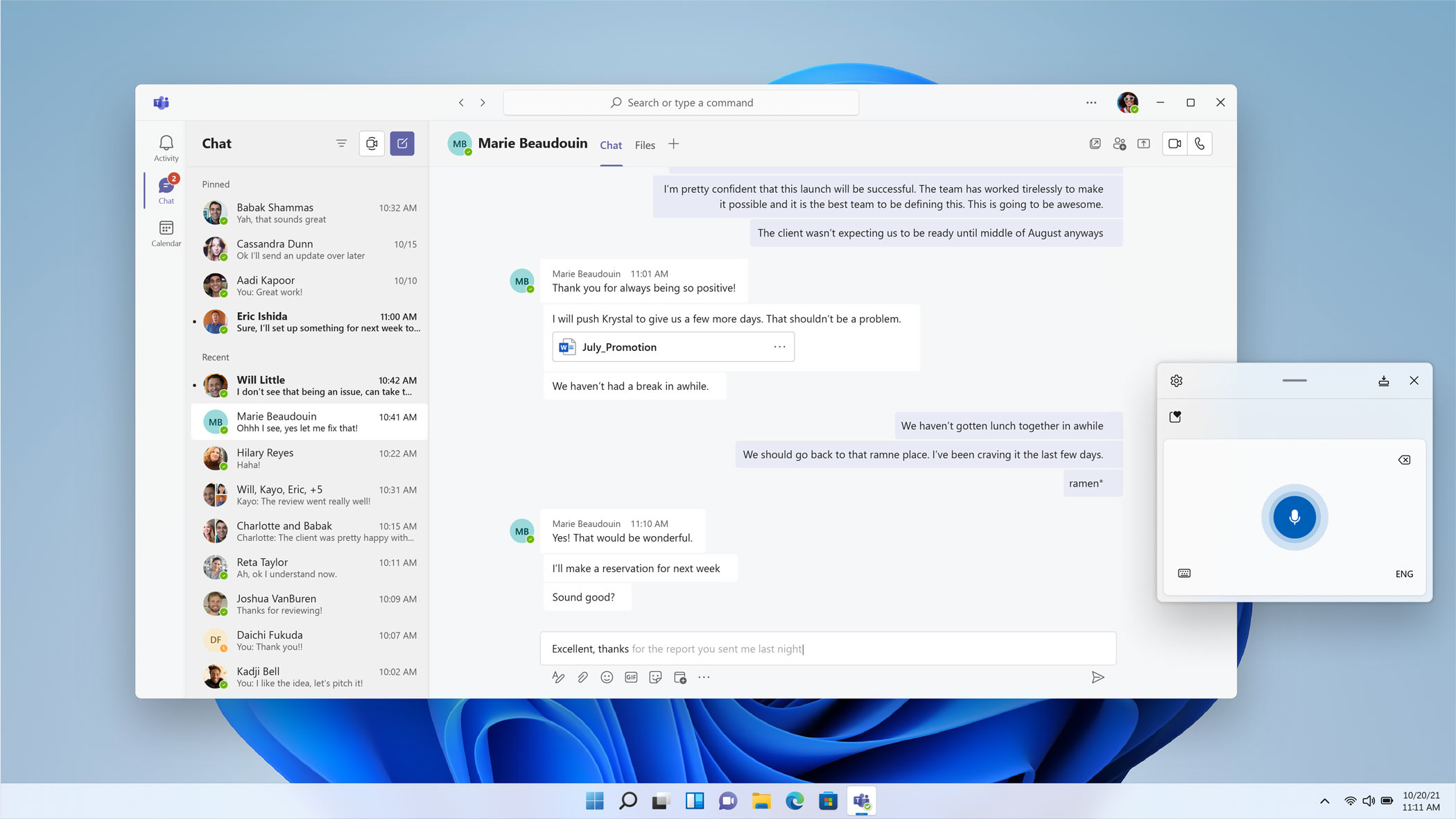
How to download Windows 11
Microsoft has been updating the Insider builds of Windows 11 on the developer channel since its announcement, so if you want to give it a try, we have a handy guide all about how to download Windows 11.
The build is now widely available on the beta channel, showcasing more refinements across the board, including the Microsoft Store.
Before you do though, the best point of call would be to make sure that your PC is enrolled for Microsoft's Insider Program first, as long as it meets the requirements.
But do be aware, we advise to only run it on a PC that's not your main machine, as there are plenty of small issues for now.
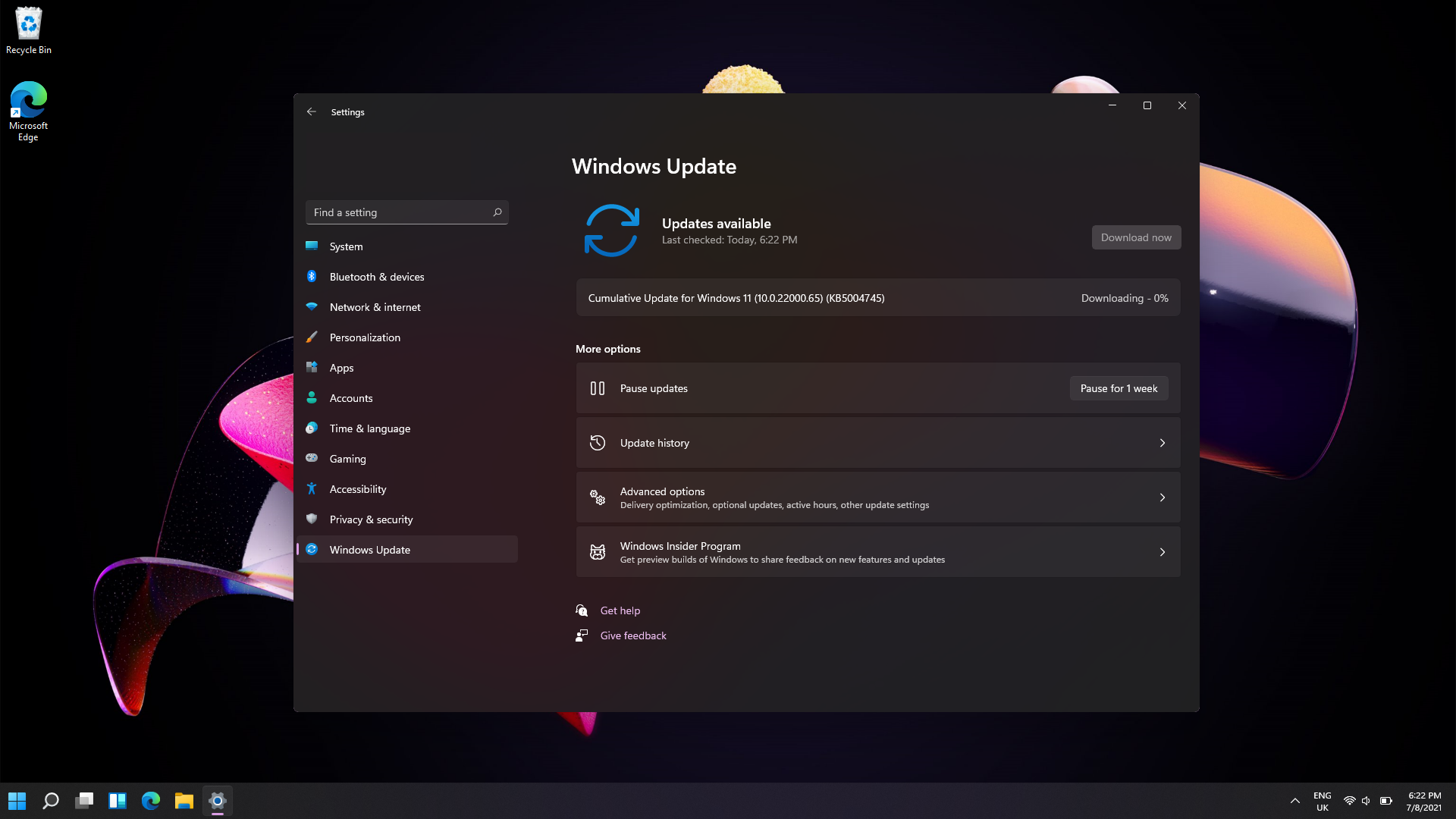
In the meantime, vendors such as Lenovo have released some guidance to other users who have machines running Windows 7 and above, that it may be a free upgrade, but with a caveat.
There's even an option to downgrade to Windows 10 if you are experiencing issues with Windows 11. This is available in the current Insider builds, but you can only do it within 10 days of upgrading your machine, otherwise a clean install has to be done in order to go to Windows 10.
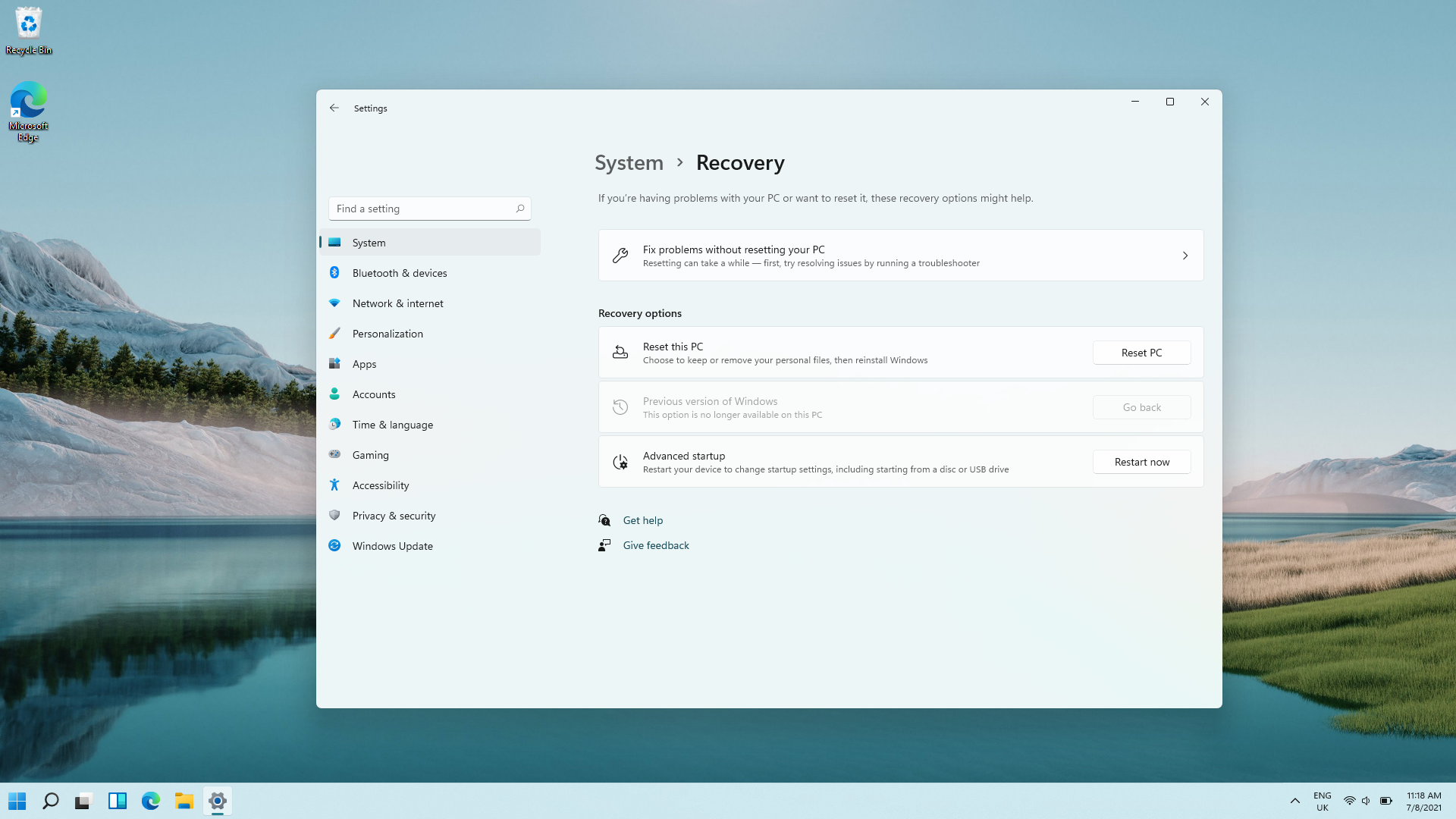
Minimum Specifications
There's been a lot of discussion as to which devices are eligible for Windows 11. Regardless of the TPM requirement, others are simply wondering if they need to look to upgrade their PC or laptop soon.
For now, Microsoft have published the requirements for the update, but they are subject to change as we near release and the company take feedback on board.
This feedback looks to have made an effect, with Microsoft posting a support post in how to tell if your PC is enabled with TPM 2.0 so it can be eligible for an upgrade to Windows 11.
Intel, AMD and others are already working on compatibility for Windows 11, making sure that processors and graphics cards are compatible as soon as the upgrade launches on October 5.
- Processor: 1 gigahertz (GHz) or faster with at least two cores on a compatible 64-bit processor or SoC
- RAM: 4GB
- Storage: 64GB
- System Firmware: UEFI, Secure Boot capable
- TPM: Trusted Platform Module 2.0
- Graphics Card: DirectX 12 or later with WDDM 2.0 driver
- Display: 720p, 8-bit per color channel, at least 9-inch diagonal
- Internet Connection and Microsoft Account: Windows 11 Home requires an active internet connection and a Microsoft Account to complete initial, first-use setup of the operating system, or when switching a device out of Windows 11 Home in S-mode.
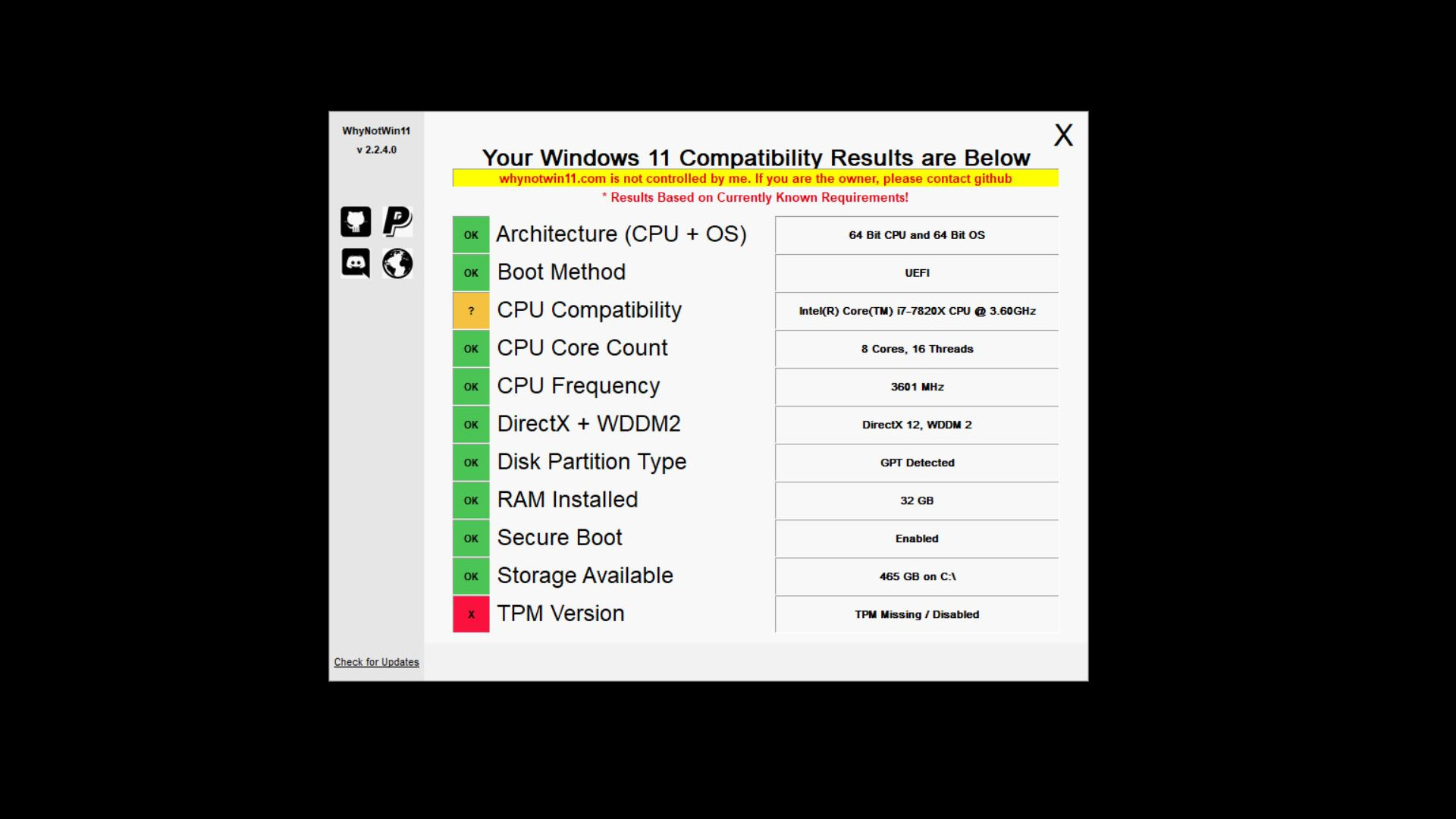
How much is Windows 11?
Windows 11 will be a free update for existing Windows users – you'll need to be online to download, install and activate Home versions, and you'll need to have a Microsoft account when installing it on or upgrading your PC or tablet.
So far Microsoft have released the hardware requirements for Windows 11, but there's confusion over TPM (Trusted Platform Module) and whether the company are pushing hard over the minimum threshold for which devices are eligible to be updated to the new version.
While we've got a handy explainer for you that goes into TPM, hardware vendors can still offer new machines with Windows 11 that won't need this requirement, albeit with good reason to.
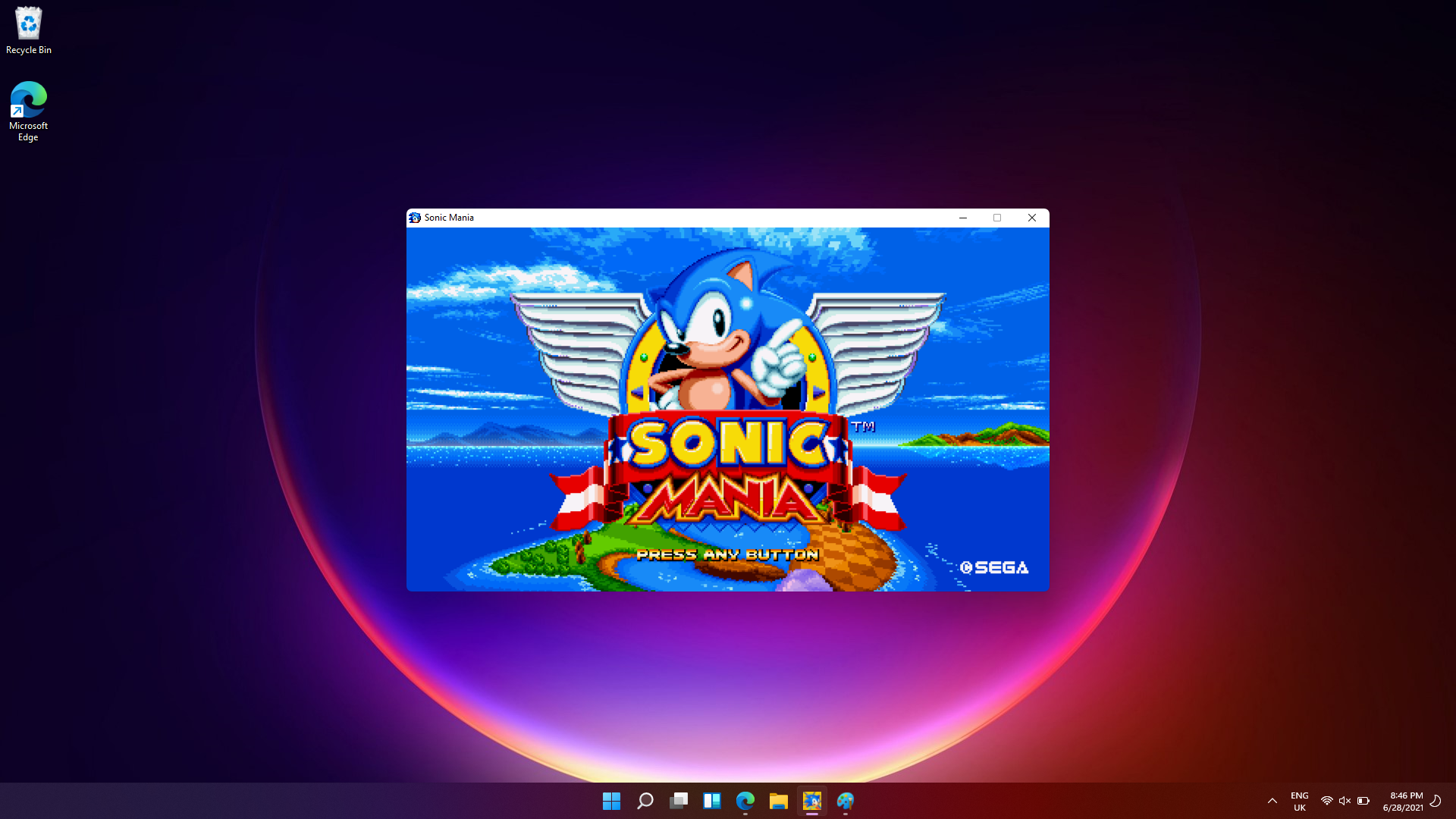
Windows 11 features
There are improvements across the board in Windows 11, with Microsoft promising that updates will be 40% smaller, and touting Windows 11 as "the most secure release yet".
The taskbar is optimized for touch as well as mouse peripherals, and is now renamed the dock.
New multitasking features are also on offer thanks to a feature called Snap Layouts, which enables you to arrange multiple windows across the screen, not just side by side, but in columns, sections and more.
There's now a much-improved health check app found in Settings, where Windows 11 will recommend you to turn down the brightness for example, change the power saving mode of the battery and much more.
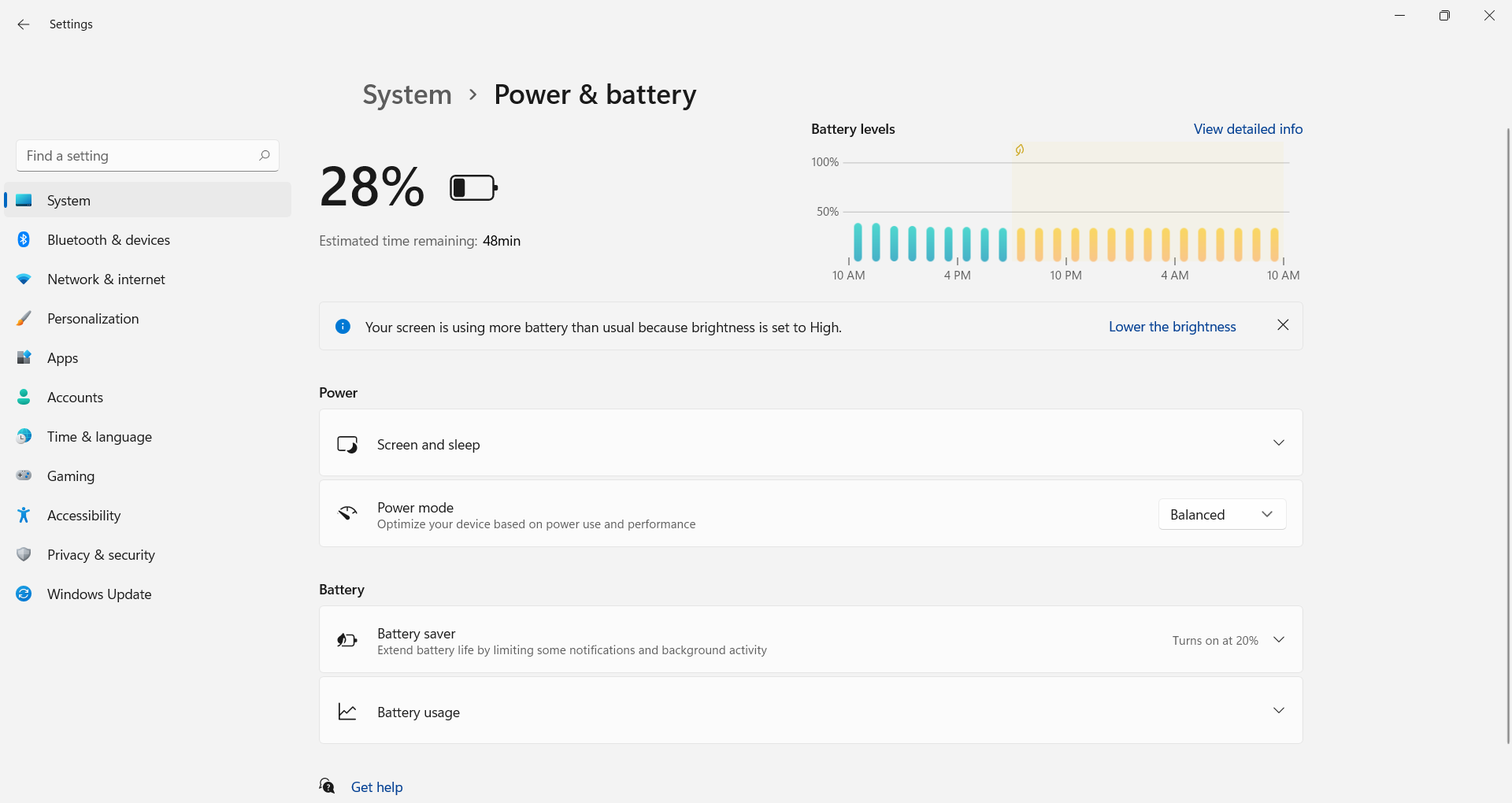
Another feature is Snap Groups, where you can go back to previously snapped windows from the dock, so for example you can go to your email app, Edge browser windows or anything else without having to snap them back to the previous view again.
There's also improved multi-monitor support, so when you reconnect an external monitor, Windows 11 remembers the previous positions of the windows that were on that monitor.
There's even an estimated installation time for Windows Update, so you can see whether you need to hold off from updating your PC until later in the day.
Teams is also integrated to the dock, so you can easily join in with meetings and family calls. This looks like the first inkling of Skype disappearing from Windows, especially with the Skype sounds being heard in the demo when a call was incoming.
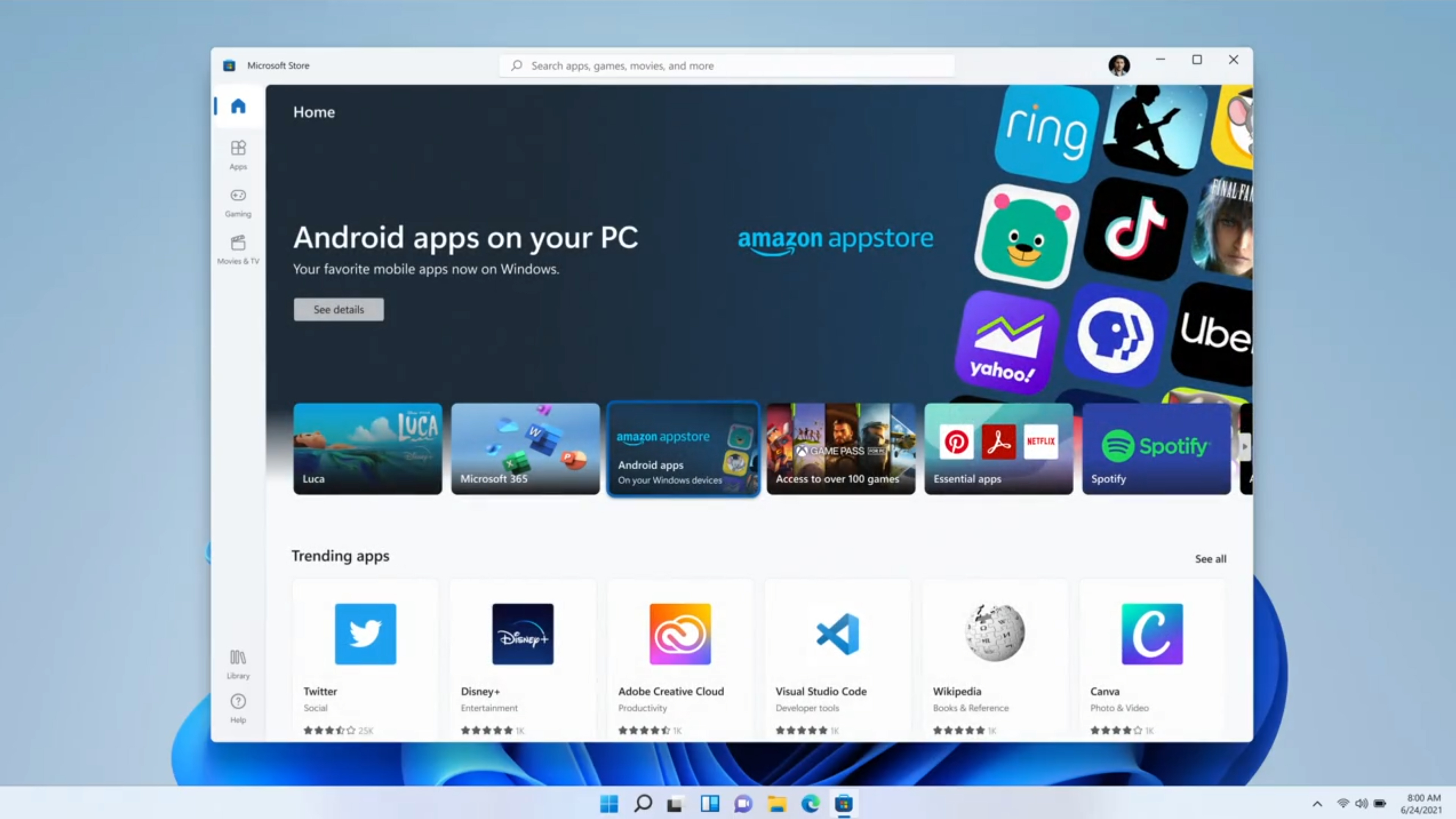
The Microsoft Store is finally seeing a redesign, with better-curated content, and a better options for managing your purchased shows, such as mirroring them to your television. Apps such as Disney+, Adobe Creative Cloud, Pinterest and more are already in this redesigned store for Windows 11, ready to go.
WPA, EWP and Win32 apps are now all in the Microsoft Store, ready to go. If a developer has a commerce engine, they can keep 100% of the revenue brought from the Microsoft Store.
Android apps are also ready for Windows 11, discoverable from the Microsoft Store, via the Amazon App Store, so you can download TikTok and more, ready to use on your PC or tablet.
We suspect that the reason why Amazon are allowing their version of the store instead of Google, may be to do with the .APK filename being replaced from August.
The new store opens up possibilities for other applications to arrive in Windows 11, even Apple's iMessage, which could follow iTunes and Safari.
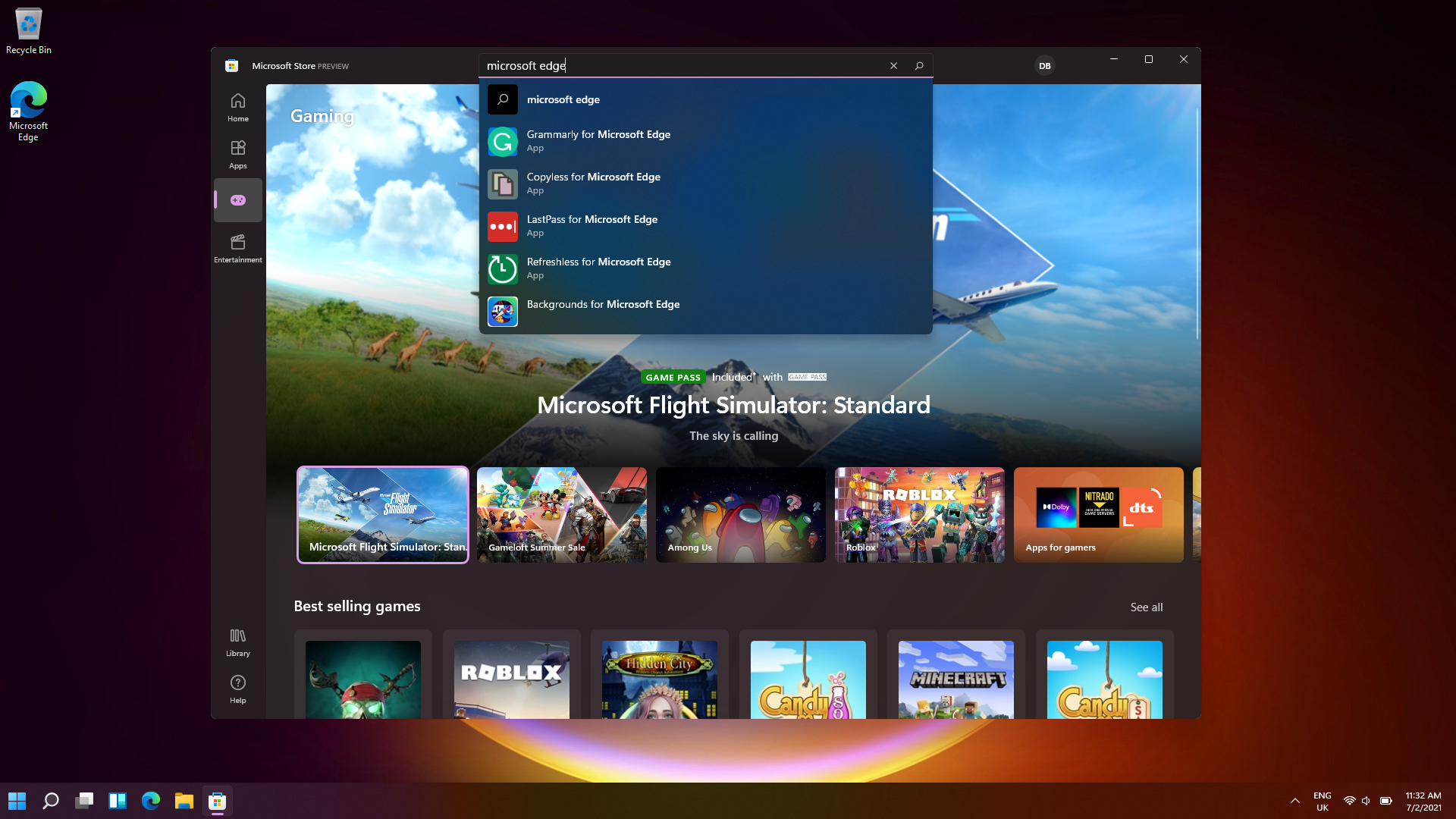
Windows 11 vs Windows 11 pro
Depending on what you currently use your system for, you may need to consider if you will be upgrading to standard Home version of Windows 11, or if you need to bump up to Windows 11 Pro, Microsoft's enterprise version of the operating system. Regardless of what your preference may be, both have the same minimum system requirements so you'll need to meet those standards regardless of what version you side with.
There are numerous benefits to Windows 11 Pro, though mostly security related to protect businesses and organizations to keep data safe, with features like Windows Information Protection (abbreviated to WIP).
Another difference you'll see between Windows 11 Home and Pro is when you’re setting it up for the first time, as with the Home version you'll need to set it up with an internet connection and a Microsoft account.
Windows 11 doesn't have either of these restrictions, which may tempt some non-enterprise users into buying the Pro version of the operating system to avoid using a Microsoft account. Windows 11 Home PCs also can’t be joined to Active Directory, which are often used on business devices to control access to certain applications and resources.
You can find a full list of the differences between Windows 11 Home and Windows 11 Pro over on the official Microsoft comparison page.
A new look for 11
Fluent Design is the new name for the look of Windows 11. Across the board everything looks more modern and fresh, with rounded windows and apps such as Snipping Tool seeing huge improvements in years.
One of the biggest changes users will notice is that the Start menu has been moved to the center of the screen – and it's now "cloud powered", so it dynamically changes depending on the time of day, and the content you're working with.
If you're using the Insider Build, there's already ways of customizing the taskbar and the start menu, including moving the icons back to the left.
Light Mode and Dark Mode are here too, with a unified design across the operating system, with colorful wallpapers to choose from as well.
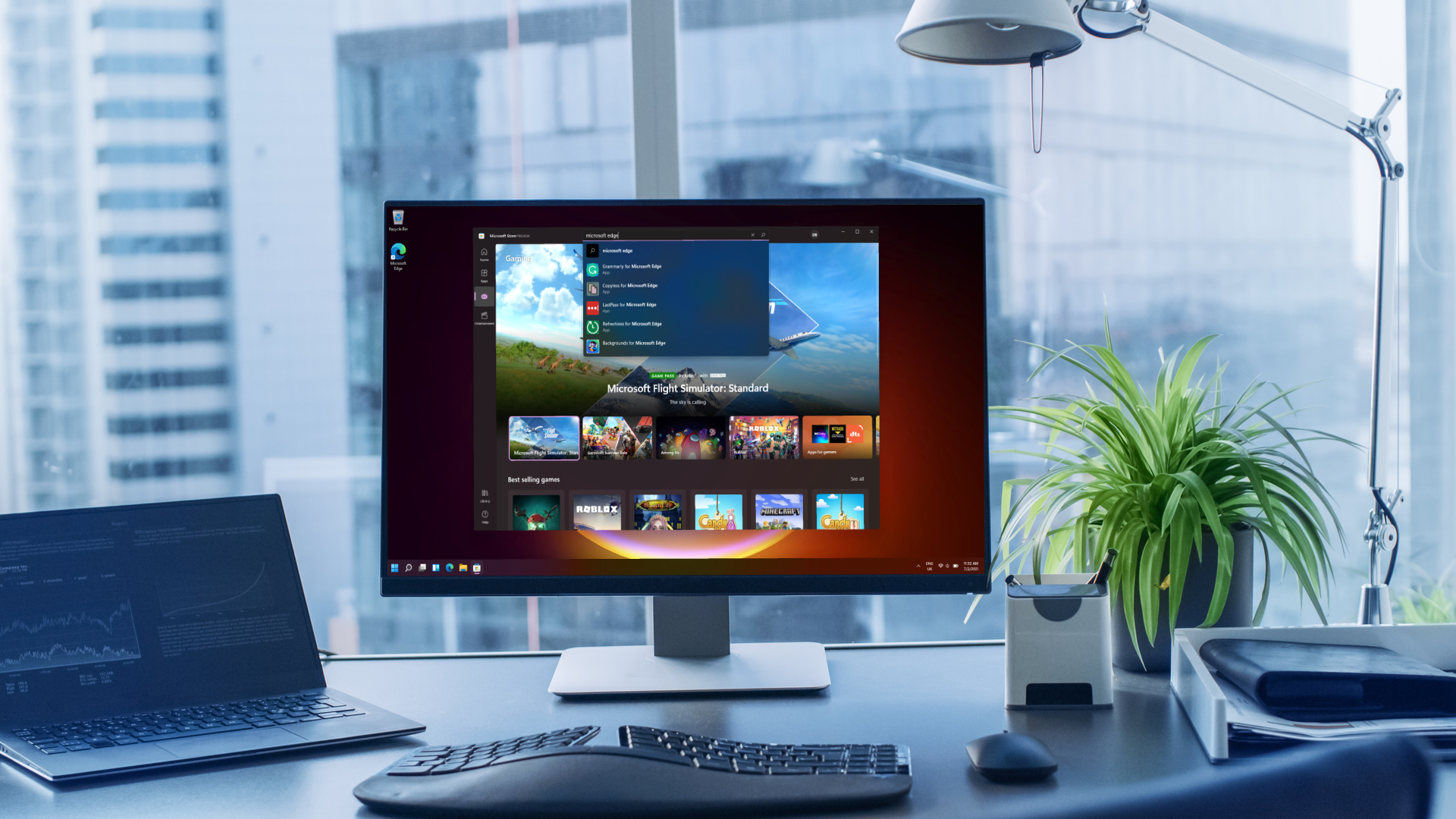
Windows Widgets are back in Windows 11, accessible via the dock, with Microsoft touting AI-powered dynamic features that enable widgets, as with the Start menu, to change depending on the apps you're using and the time of day. On the touchscreen, you can slide from the left on the desktop to have widgets appear.
There are plenty to choose from, such as the weather, Bing maps, news, and more.
These will be available for third-parties as well, so you may see as many widgets available to pick as there are on Apple's iOS and iPadOS operating systems.
Many apps are being redesigned for Windows 11, such as the Photos, Snipping Tool and Paint apps, bringing them in line with the Fluent Design language.
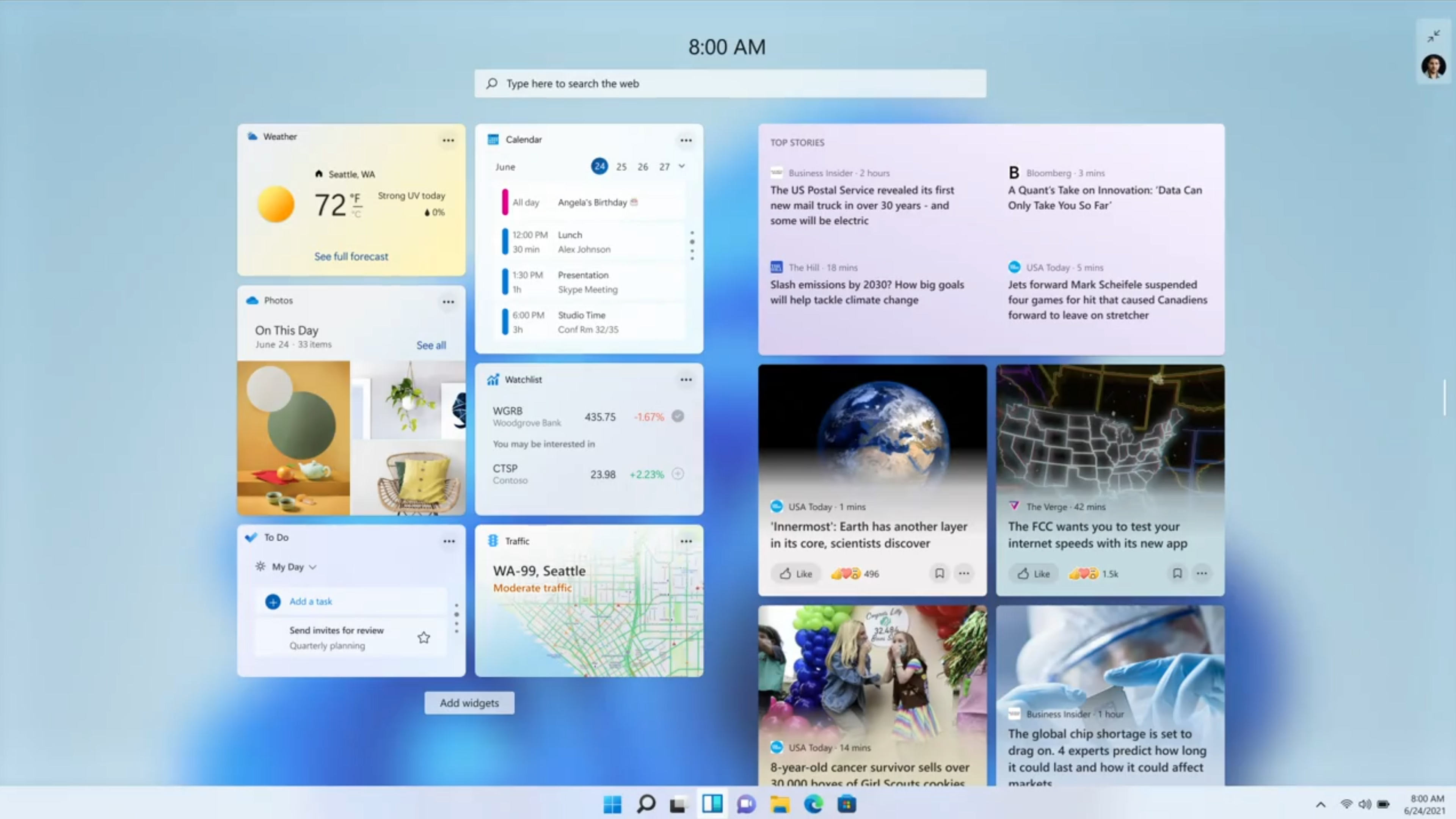
Gaming on Windows 11
Gaming will be a much bigger focus in Windows 11, with the sluggish and frustrating-to-use Windows 10 Xbox app replaced by a new Game Pass app that enables you to buy, manage and remove games, making it easier for you to access and download games, from Doom Eternal to – soon – Halo Infinite.
HDR will also be supported on compatible machines, offering improved lighting and contrast for gaming and viewing media. Direct Storage is also here, with the main game assets able to be downloaded and installed, enabling you to play your games even faster than before.
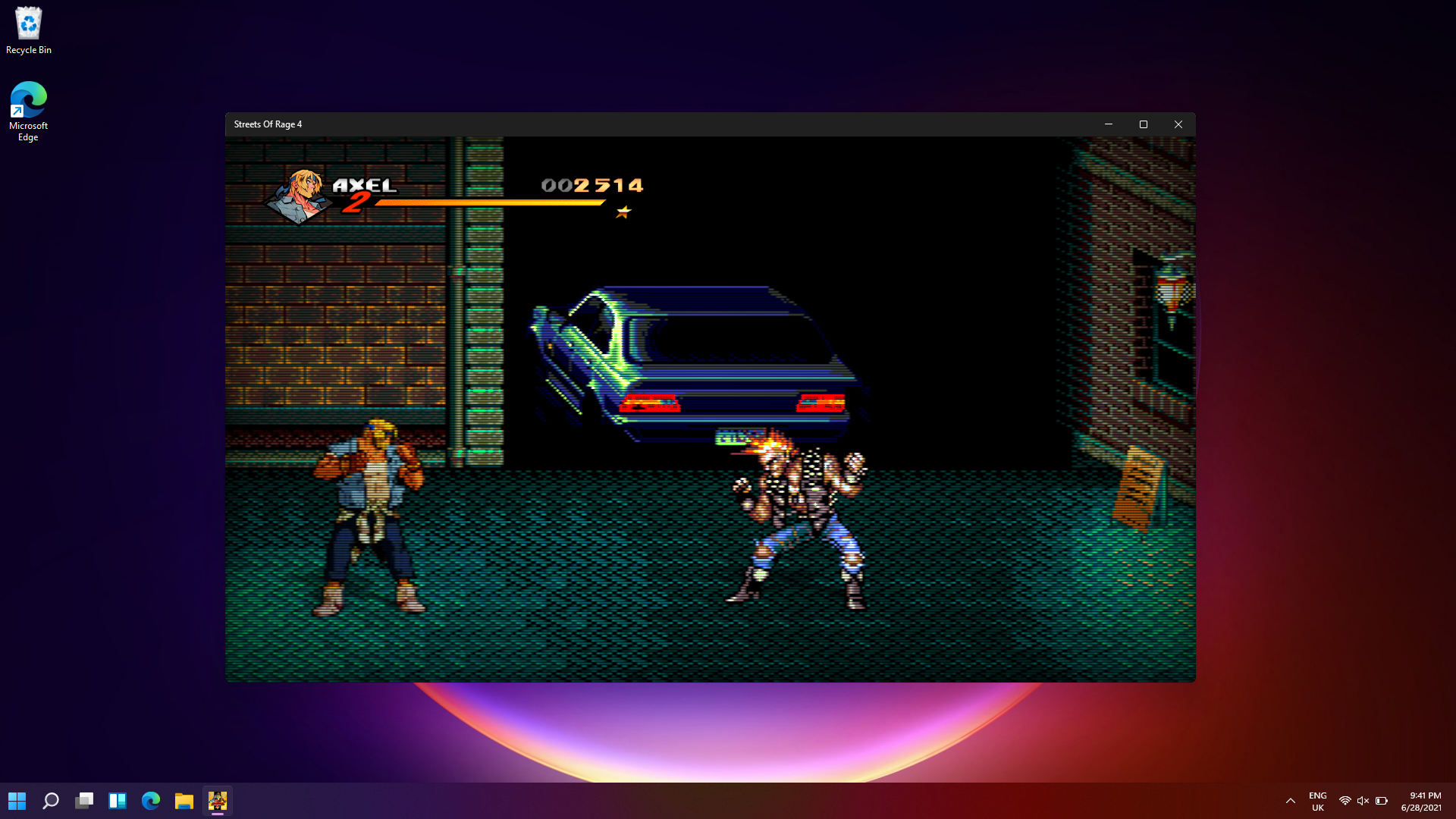
Touch improvements
Tablet mode has been one of Windows' weaker points ever since Windows 8, and the new tablet features that Microsoft showed off for Windows 11 could be key to the operating system's fortunes, especially with future Surface products in the pipeline from Microsoft – to have a new, numbered operating system for its upcoming tablets could be a big selling point for new users.
At the event, Microsoft touted bigger touch targets and easier ways to move windows around, and better rotate optimizations, for example in how windows are rearranged, so you don't lose track of the applications you were using.
Gestures used with the trackpad of the Surface models are also coming to the touchscreen, bringing in some familiarity here. Haptics is also coming to Windows 11 when you use a stylus for better feedback when drawing or sketching.
The touch keyboard has also been redesigned, with a smaller keyboard just for your thumb, and emojis ready to be used. Microsoft says dictation will also be improved, alongside voice commands, with 'delete that' options and more.
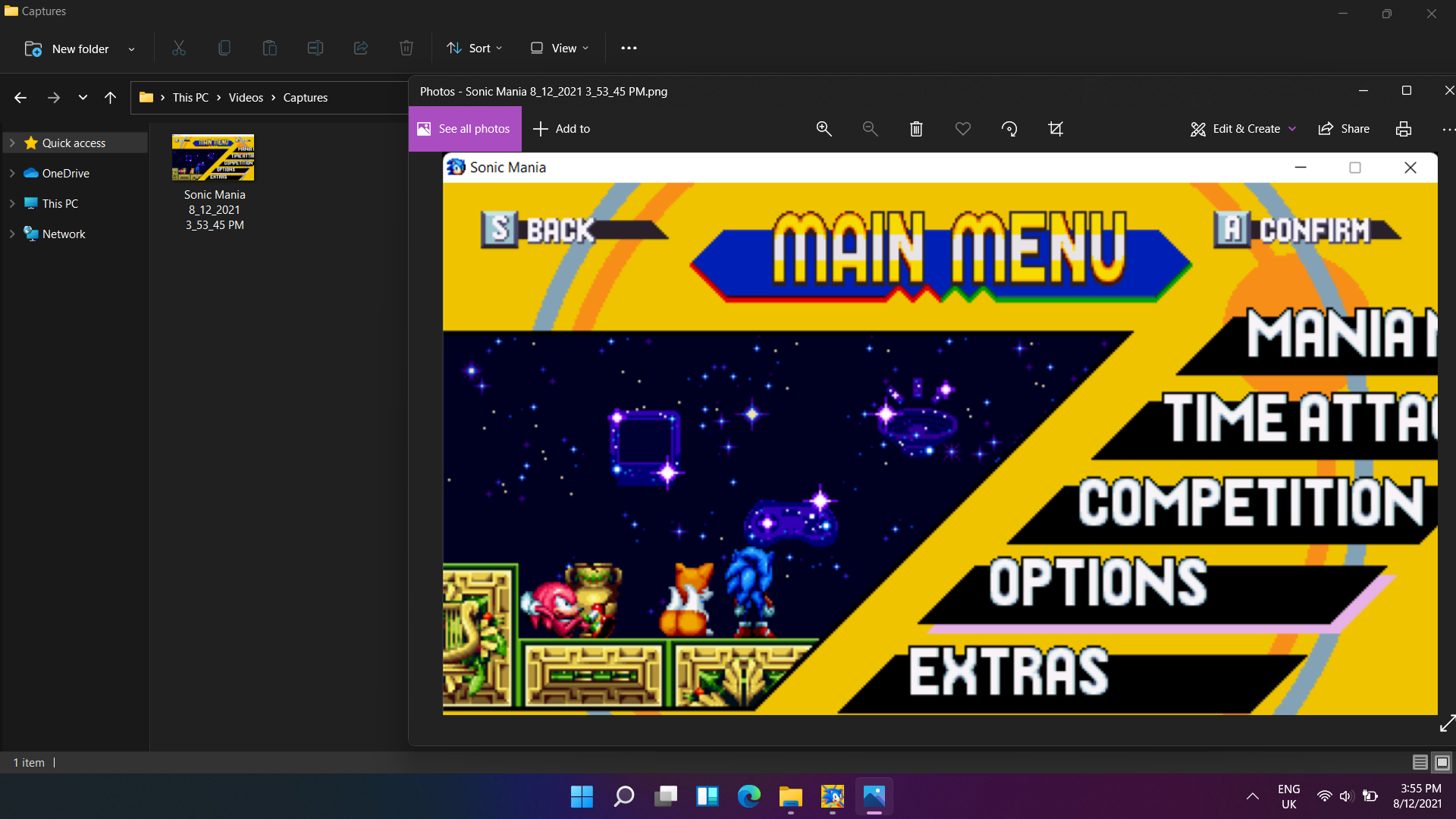
- Find out where to buy Windows 10
No comments:
Post a Comment